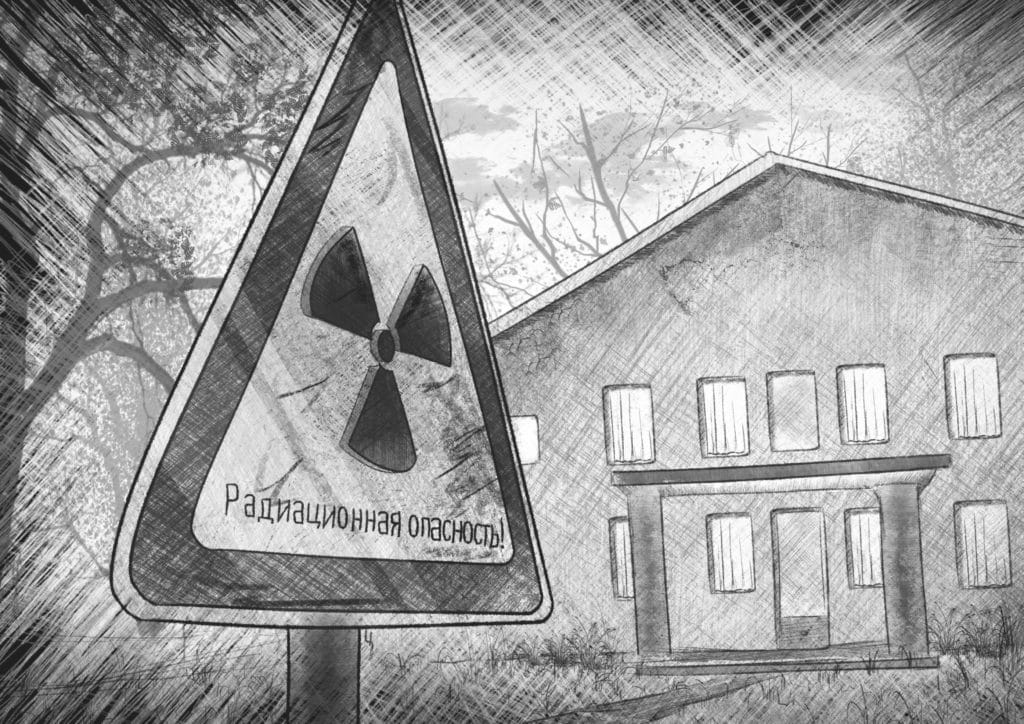
Until April 1990, work at the Shelter was carried out by the Integrated Expedition — 290 people, involving 180 people from the Pripyat NPO construction and installation department, employees of research and production institutes, military personnel and personnel of the Civil Defense of the USSR Ministry of Defense, who provided decontamination of premises – 280 people per day.
However, the pace of work in 1989-1990 markedly decreased. This was mainly due to inadequate funding, as a result of which individual civil defense units and military builders left the site.
Along with work at the 4th power unit, enormous efforts of the military were made in carrying out a comprehensive program for the conservation of the engine room. Initially, it was planned to attract about 20,372 people for this work, whom they expected to receive radiation at 50 rem / year, with an annual maximum allowable rate of 10 rem.
The option of preserving the engine room without destroying building structures and removing the roof was chosen to avoid attracting such a huge number of people. The implementation of these works was assigned to the Comprehensive Expedition of the Institute of Atomic Energy.
In the course of work under conditions of high levels of radiation pollution of the environment, questions of normalizing its permissible limit for humans were extremely important. Science claims that the human body is not capable of sensing ionizing radiation.
However, as participants in the events write, the one who happened to visit the fields of more than 50 x-rays per hour is unlikely to forget the tension in the whole body, unnaturally aggravated sensations and slight ringing in the ears. In addition, there was indeed a lot of iodine in the air in the early days of the accident, as evidenced by the dark red spots that formed on the green surface of the P-2 army respirators.
Radiation exposure of the military – the limit or lawlessness?
The information accumulated in connection with the participation of military personnel in the liquidation of the accident allowed us to resolve the issue, which was the subject of discussion at the initial stage, namely, the establishment of the maximum permissible dose of radiation to the participants in the work.
So, the chief hygienist of the Ministry of Defense believed that it was necessary to set a limit of 25 rem, and the head of the chemical forces of the Ministry of Defense, Colonel General V. Pikalov, who spent quite a lot of time in the zone, considered it possible to establish this border, 50 rem, as suggested by the Wartime Rules.
However, the statistical data obtained as a result of irradiating children from 122 mobile detachments of chemical troops, who conducted radiation reconnaissance at the Chernobyl nuclear power plant twice a day from April 27, proved the chief hygienist of the Moscow Region to be right. Having received radiation from 25 to 72 rem, they were all hospitalized due to deterioration in their general physical condition and poor blood count.
And only on May 21, 1986, by order of the Minister of Defense of the USSR № 110, the maximum permissible dose of radiation exposure was set at 25 rem for all military personnel involved in minimizing the consequences of the Chernobyl accident. Subsequently, this norm decreased: it amounted to 10 rem in 1987, and 5 rem in subsequent years.
But, despite the efforts aimed at ensuring the radiation safety of the military personnel involved in minimizing the consequences of the accident, the number of people exposed was very significant. By the end of 1986 alone, 66,752 people had been irradiated through the USSR Ministry of Defense alone, among whom more than 4,200 received a dose of more than 25-50 x-rays.
It is possible that the number of exposed persons and the consequences for their health might not be so significant if the “Temporary sanitary safety requirements for the liquidation of the consequences of the Chernobyl accident” would appear more quickly.
This document, agreed with the necessary ministries and departments, was submitted for execution only three months after the start of active operations in the zone. These requirements provided, in particular, that the total maximum permissible dose of external exposure was set to 25 x-rays for the duration of the work for each employee, and the maximum daily dose was not more than 1 x-ray.
Although, certain exceptions were nevertheless provided. Moreover, according to the immediate liquidators, this document, having depicted an ideal model illustrating the health function in those extreme conditions, in many respects, remained just a good normative document, but very far from reality.